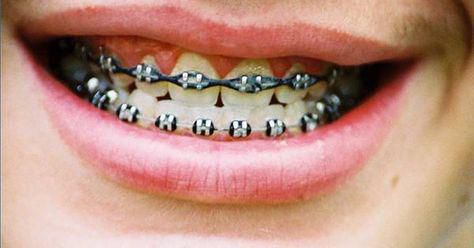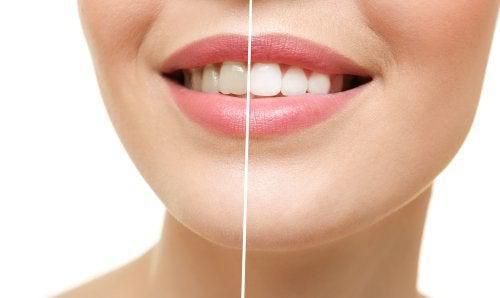Tijuana Dental Studio
We are licensed to work with American insurance providers. We stay up to date with the latest dental technologies, constantly training and improving our staff’s knowledge and abilities in order to offer you the attention and treatment you deserve. We strive to offer you the most personalized and specialized treatments, elaborating affordable dental treatment plans that will adjust to your dental needs and solve them in the best way possible.

WE ARE CERTIFIED TO WORK WITH YOUR AMERICAN PPO INSURANCE!





Want to know more about Medical Tourism in Tijuana from the point of view of one of our patients?
Take a look at International YouTuber Gareth Leonard’s trip to Tijuana for a personal experience of Tijuana’s Medical Tourism!
ABOUT OUR CLINIC
We are the leaders for dentistry in Tijuana. We believe in creating a welcoming environment that will raise the standard in the minds of all of our patients.
If you’re looking for Tijuana dentists, you don’t have to look any further, you’ve come to the right place. At Dental Studio we are an enterprising group of dentists looking to create a change in the concept of dentistry. It is for this reason that we dedicate ourselves completely to offer the best dental services for our patients, always looking for the latest updates to improve our services and our care to our patients.
Something we focus on as Tijuana dentists are making our patients feel comfortable. That is why we care about the quality of service we offer our patients so that they feel the warmth in our treatment and can give us the confidence to treat their teeth. Another thing we seek to focus on is the quality of our materials, as this is indispensable so that we can provide the best services to our patients without any other problem. As dentists in Tijuana we stand out for providing the maximum personalized service so that each of our patients can feel special, that is our main goal.


PRICE LIST
HIGH-QUALITY SERVICE AT REASONABLE PRICES
We offer the best dental treatment, and we offer them at affordable prices. See our price list and compare with what you would pay in USA.
Prices are in American Dollars
| General Evaluation | EEUU | Dental Studio |
|---|---|---|
| Evaluation | $70 | $25 |
| Full-Mouth X-Ray | $85-$250 | $42 |
| Individual X-Ray (2-3 teeth) | $15 | |
| Prevention and Oral Health | EEUU | Dental Studio |
| Teeth Cleaning and Polish | $93 | $60 |
| Composite Filling | $250 | $77 |
| Amalgam Replacement with Composite Filling | $94 | |
| Cosmética Dental | EEUU | Dental Studio |
| Composite Veneer (per tooth) | $200 – $400 | $99 – $149 |
| Porcelain Veneer (per tooth) | $950 – $2,500 | $495 |
| In-Office Whitening | $400 – $800 | $182 |
| Whitening Home Kit | $400 – $650 | $154 |
| Dental Surgery and Extractions | EEUU | Dental Studio |
| Root Canal | $700 – $900 | $220 |
| Root Canal Retreatment | $600-$700 | $275 |
| Root Scaling and Planing | $140 – $210 per quadrant | $115 per quadrant |
| Periodontal Surgery | $1,000 – $4,000 | Starting at $275 |
| Crown Lengthening | $1,000 – $4,000 | $186 |
| Simple Extraction | $150 – $300 | $77 |
| Surgical Extraction | $350 – $650 | $185 |
| Coronas | EEUU | Dental Studio |
| Prefabricated Post | $250 – $500 | $121 |
| Metal-Porcelain Crown | $800 – $1,100 | $275 |
| Zirconia/Emax Crown | $1,300 – $1,600 | $495 |
| Dental Implant | $3,000 – $4,500 | $990 |
| Implant-Supported Zirconia Crown (includes abutment) | $3,000 – $4,500 | $820 |
| Bridges and Prosthesis | EEUU | Dental Studio |
| Metal Removable Bilateral Partial Bridge (per piece) | $700-$1,800 | $495 |
| Metal Removable Unilateral Partial Bridge (per piece) | $700-$1,800 | $275 |
| Flexible Removable Bilateral Partial Bridge (per piece) | $1,300 | $660 |
| Flexible Removable Unilateral Partial Bridge (per piece) | $1,300 | $363 |
| Metal-Porcelain Fixed Bridge | $500 – $2,000 per unit | $275 per unit |
| Puente Parcial Fijo de Zirconia | $1,000 – $3,500 per unit | $495 per unit |
| Removable Dentures Set (Upper and Lower) | $2,000 | $605 |
| Occlusal Guard/Mouth Guard | $300-$500 | $99 |




DENTAL EXTRACTIONS
There are several reasons to extract one or more teeth. For example, the tooth could have been severely damaged by a blow or a disease and it can not be salvaged, or because you have lost several teeth and you need full dentures. In case of wisdom teeth, it is necessary to extract them if your mouth is small and there is no place to accommodate them, or if you’re starting a braces treatment and the eruption of wisdom teeth interferes with the treatment.
How are tooth extractions done?
The dentist may recommend that you take prescribed antibiotics before the procedure. The area around the tooth becomes numb with local anesthesia, so you don’t feel much pain. An instrument for tooth extraction called an “elevator” is used to loosen the tooth in the gum. Then the tweezers are placed around the tooth, and pulled out of the gum. The hollow in the gum is cleaned, and the remaining gums are smoothed out.
What is Wisdom Tooth Extraction?
Wisdom tooth extraction is very common since they are the last teeth to erupt when there is not enough room for them. Sometimes these teeth partially erupt or erupt at different angles, or under neighboring teeth. These wisdom teeth are also known as “impacted.” They can create some dental problems. Any food or bacteria that is trapped between the edge of the gum and the partially erupted tooth create problems such as dental deterioration and periodontal disease. It is possible to treat these teeth, but removing them completely is a better option instead of struggling to keep them clean, as they are all the way down your mouth. If you experience any type of pain near the wisdom tooth, you should seek treatment immediately instead of waiting for your regular review.
What about care after tooth extraction?
After tooth extraction, you will be asked to bite a piece of clean gauze to help stop bleeding. You may have some inflammation and discomfort in and out of your mouth. Bleeding stops quickly, but you need to keep the extraction area clean until it heals. If you continue to bleed after 24 hours, then visit your dentist as soon as possible.

ROOT CANALS
A root canal is a dental treatment in which the nerve of the tooth gets infected, or the dental pulp becomes wholly damaged. Endodontics is a specialized dental field that is concerned with the study and treatment of the dental pulp. Root canal treatment, also known as endodontic therapy, is actually a painless procedure, to repair and save infected or severely decayed teeth. Root canal procedures involve removing the infected nerve as well as the dental pulp in the tooth, which is cleaned and sealed.
Why do you need a root canal?
Before having a root canal therapy, the pain that you undergo with infection and decaying teeth could be excruciating. The common causes of tooth decay and infections could be eating foods that affect your teeth, gums, or mouth developing bacteria, as well as not brushing or flossing daily, which can form plaque and tartar. The other reasons could be toothaches, including dental cavities, gum disease, dental abscess, cracked tooth syndrome, irritation of the tooth root, temporomandibular disease, impaction, or an eruption.
What is the process of a root canal?
A root canal treatment gives relief to the unbearable pain, preventing any uncomfortable situation in the future. In the beginning, the dentist drills a small access hole to perform a root canal and removes all the debris and infection. After that, a rubber-like material called gutta-percha is used for filling the pulp chamber and sealing the access hole. A dental crown is placed to protect the tooth that has been cleaned and sealed to avoid further damages.
If you delay to carry out the procedure, the dental pulp will start breaking and infecting the bone surrounding the tooth, even though the immune system might try to protect the tooth against the occurring infection. If this is left untreated, you will have excessive pain, and swelling or tooth will develop into an abscessed tooth over time.
How should you care for your tooth/teeth after a root canal?
You should take care of your teeth in the following ways, after the root canal:
- You should avoid eating or chewing from the affected area.
- You should go for a routine check-up.
- Take the prescribed medications, as said by the dentist.

BRACES
There are many types of treatments that can help in straightening teeth. The teeth that are crooked or misaligned bite such as an underbite or overbite, then these conditions can be treated using braces and retainers. Many general dentists treat basic alignment and orthodontics, but orthodontists are those dentists who are specialized in correcting any kind of tooth irregularities.
What is the procedure for placing braces?
During your first visit, the dentist gives a comprehensive evaluation and a treatment plan. You can discuss the concerns that you have about your teeth. The dentist then takes the initial records, which include digital x-rays, photographs, and impressions of the teeth.
According to the treatment plan, spacers are placed between your molars for about a week. They create small spaces between your teeth to put the molar bands. When you come for the next appointment, these spacers are removed and replaced with molar bands. In some cases, this step may be omitted, and braces might be placed instantly.
During the final appointment, the orthodontist places the new braces. The dentist provides necessary instructions to care for the braces as well as the kind of food that you need to avoid.
What are the foods that you can eat with your braces on?
The food items that you can have even if you have braces are, as follows:
- The dairy items like milk-based drinks, soft cheese, pudding
- The varieties of bread which include pancakes, soft tortillas, muffins without nuts
- Certain types of grains like soft cooked rice, pasta
- The meat items like meatballs, soft cooked chicken, lunch meats or seafood including tuna, crab cakes, salmon
- You can have specific vegetables especially steamed spinach, mashed potatoes, beans
- You can have easy to chew fruits including bananas, applesauce, fruit juice
- You can even treat yourself with ice cream without nuts, Jell-O, milkshakes, soft cake
How to care for the braces?
You need to care for your braces really well to have straighter teeth. Follow the steps below:
- Follow the instructions given by your dentist.
- Visit your dentist regularly to check if your braces are in the right position or if they need some adjustments.
- Avoid eating chewy, crunchy, sticky, and hard foods.
- If any sports emergency pops up, then immediately check your mouth and braces for damage.

TEETH WHITENING
Teeth Whitening, also called dental bleaching, is a popular and common procedure in the field of cosmetic dentistry. In order to whiten your teeth, an oxidizing agent is used to remove the dental stains and to make teeth look whiter. Teeth whitening helps in restoring the natural color of the tooth. It stops and prevents the discoloration or staining of the teeth. You need to go for regular cleaning to maintain your whitening results.
What are the reasons for tooth discoloration?
There are specific reasons that lead to tooth discoloration. Some of the most common ones are consuming highly colored foods and drinks such as berries, tea, coffee, red wine. Sometimes it might be due to consumption of the medications, habit of smoking, aging, and trauma, which also cause tooth discoloration.
What are the advantages of teeth whitening?
Teeth whitening is the most popular trend for changing and updating yourself instead of wasting money on a whole new wardrobe. Some of the advantages of teeth whitening can be as follows:
- Teeth whitening is an affordable option to improve one’s appearance.
- You will be able to gain a lot of self-confidence.
- Having a beautiful white smile can lessen the appearance of wrinkles on the face.
- There will be a positive change in you.
- You will be able to make good and healthy choices by eating healthier and living healthier.
Is carrying out teeth whitening a safe option?
According to the clinical studies, it is proven that teeth whitening process use carbamide or hydrogen peroxide, and if conducted under the supervision of a dental professional, is considered to be a safe option for your teeth and gums.
What are the side effects of getting your teeth whitened?
The most commonly experienced side effect is tooth and gum sensitivity. It is better to ensure from your dentist if teeth whitening is the right option for you and also about using the appropriate concentration of the whitening formula. Most of the at-home whitening products consist of two mild desensitizing agents, Potassium Nitrate and Amorphous Calcium Phosphate that minimize tooth sensitivity.

DENTURES

VENEERS
Dental veneers are thin pieces that are made of porcelain and are bonded over the front of your teeth to change their color or shape. Veneers are usually used to treat the teeth that have uneven surfaces or are chipped and discolored. Veneers are also used in treating the oddly shaped, crooked or unevenly spaced teeth. Sometimes, you don’t even require anesthesia to carry out the procedure. Veneers last long, along with their color stability, resistance to permanent staining from beverages like coffee, tea, or from smoking.
What is the process of getting dental veneers?
Dental veneers require at least three visits, i.e., the first to diagnose and plan the treatment, then for preparation, and finally for bonding.
During the first visit, the dentist discusses and takes your opinion to realize how your teeth will look and feel like with veneers. At this time, the dentist takes photographs, molds, and scans. They help in designing your new smile as well as improving the communication of your ideal smile vision between you, the dentist and the lab .
At the time of tooth preparation visit, the teeth that are to be treated, are lightly buffed to make space for the little added thickness of the veneer. During this visit, the dentist takes a mold and impression of the teeth, which is then sent to the dental lab for creating the customized veneers. Temporary veneers are placed for the time that is between the second and third appointments.
During the final “bonding” visit, the veneers that are ready are placed on the tooth surface. Their color and fitting are checked, and then they are bonded permanently.
How long could the veneers last?
Veneers are durable, and their lasting depends on your maintenance. You can even expect them to last for a decade or more. You need to provide general care to maintain your veneers, such as:
- Brush twice a day
- Floss at least once a day
- Rinse your mouth with an antiseptic mouthwash
- Go for routine dental visits
- Avoid chewing ice or any hard candy as it affects your veneers just as it does to your natural teeth.

DENTAL RESINS
Damage inflicted on the enamel may be the result of decay, fracture, chipping, etc. Restorations are a great way to correct such damage. They may be in the form of veneers, fillings, crowns, etc. Dental fillings come in several types. Resin fillings are the most suitable type of restoration that bonds directly to the surface of teeth, creating a seal that lasts long. They can withstand biting and chewing pressure.
What is the procedure involved in getting dental resins?
The procedure involved in getting dental resin fillings is simple and does not take much effort.
Once the patient has been considered a suitable candidate for resin fillings, the dentist would begin the procedure by using a hand-held device to remove any decay from the tooth.
A chemical agent in the form of a mild acid would be used to prepare the tooth’s enamel to initiate and help active bonding of the adhesive material.
The dentist would then mold and shape the prepared tooth. A flexible band would be placed around the enamel securing it. While making your restoration, the dentist would ensure that they match the color of the existing teeth structures.
The side-effects of a deep filling can be avoided with the application of medication.
Upon applying the resin material, a curing light is used to harden and secure the dental filling. The dentist also takes measures to ensure that the filling does not mess up with the patient’s bite. Hence, the filling would be filed and adjusted accordingly to give it a natural look.
What are the benefits of dental resin restorations?
Resin restorations offer patients several benefits. A few of them are:
- These fillings release a compound named “Fluoride” that helps re-mineralize the teeth.
- They quickly bond with the teeth structure
- The resin material mimics the nature of our teeth’s natural enamel
Are there any post-op instructions while getting resin fillings?
- In case the procedure required the use of a local anesthetic, it is advised to avoid chewing until any sign of numbness has completely worn out.
- Patients are encouraged to use desensitizing toothpaste to prevent signs of sensitivity.
- Use saltwater rinses to minimize signs of swelling
What is cosmetic dental bonding?
If you suffer from gaps between teeth, uneven teeth, or signs of gum recession, then dental bonding is recommended for you. Chipped, worn-out, or uneven teeth can be repaired with dental bonding. Teeth would be prepared, and a conditioning gel would be placed on the surface of the enamel. The enamel would then be sculpted to shape to retain the shape of the tooth.

CROWNS & BRIDGES
Dental crowns are a type of dental restoration that encircles the tooth that is underlying. Crowns help in restoring the shape and appearance of the tooth when the tooth gets severely damaged, for example, following a root canal, a deep cavity, or a deep crack in the tooth.
Dental crowns are also used in attaching bridges, covering the dental implants, or even replacing an existing filling. Dental crowns also serve for aesthetic purposes, covering the discolored or stained tooth and enhancing your appearance.
What is the procedure for having dental crowns?
During the first visit, the dentist reduces the size of the tooth to place the crown. An impression or mold is taken, which is sent to the dental lab where a customized crown is designed. A temporary crown is placed during the time between these two visits. As soon as the crown is ready, it is tried out in your mouth to see if it fits correctly and it pleases you, and if it does, it is cemented on the place.
What is a fixed dental bridge?
A fixed dental bridge is a great way of replacing the missing teeth. A fixed dental bridge is a prosthetic tooth (or teeth) that is attached to your already existing teeth. Fixed dental bridges are customized and blend beautifully with the surrounding teeth, giving you the ability to speak, chew, and smile normally again.
What is the procedure of getting a fixed dental bridge placed?
It should take two visits to place a fixed dental bridge. During the first visit, the dentist prepares the teeth next to the missing tooth or teeth for the dental bridge. A mold or impression is taken, and then a temporary dental bridge is placed over the teeth. These impressions are sent to the dental lab, which uses them to create an excellent fitting fixed bridge.
As soon as the bridge is ready, the second visit occurs. During this visit, the temporary bridge is removed, and the permanent bridge is tried out and if you are satisfied with its fitting and color, the bridge is cemented in its place. You will have natural-looking teeth, which will enhance your confidence and smile.
What our patients are saying…
“Look no further for your Tijuana dentistry. TDS is clean, efficient, and up-to-date. My crown repair and cleaning was fast and painless and the repair is invisible . Highly recommended!”
jasi j. | Jun 2024
“Great first time experience. I had a cleaning and the whole experience was as good or even better than a cleaning back home in US. The staff is kind and Dr. Javier Sandoval was informative and helpful with guiding me towards healthy teeth and gums. Thank you. Dental Studio. I would highly recommend…”Karl S. | Jun 2024 “I had a great experience at this dental establishment. They were able to do 2 root canals and 2 crowns within 2 days. I felt no pain at all. The specialists are very kind and will make sure you’re comfortable before the procedure begins. I do recommend you make an appointment. I was very impressed …”Reyes B. | Jun 2024 “Look no further for your Tijuana dentistry. TDS is clean, efficient, and up-to-date. My crown repair and cleaning was fast and painless and the repair is invisible . Highly recommended!” jasi j. | Jun 2024 “Great first time experience. I had a cleaning and the whole experience was as good or even better than a cleaning back home in US. The staff is kind and Dr. Javier Sandoval was informative and helpful with guiding me towards healthy teeth and gums. Thank you. Dental Studio. I would highly recommend…”Karl S. | Jun 2024
